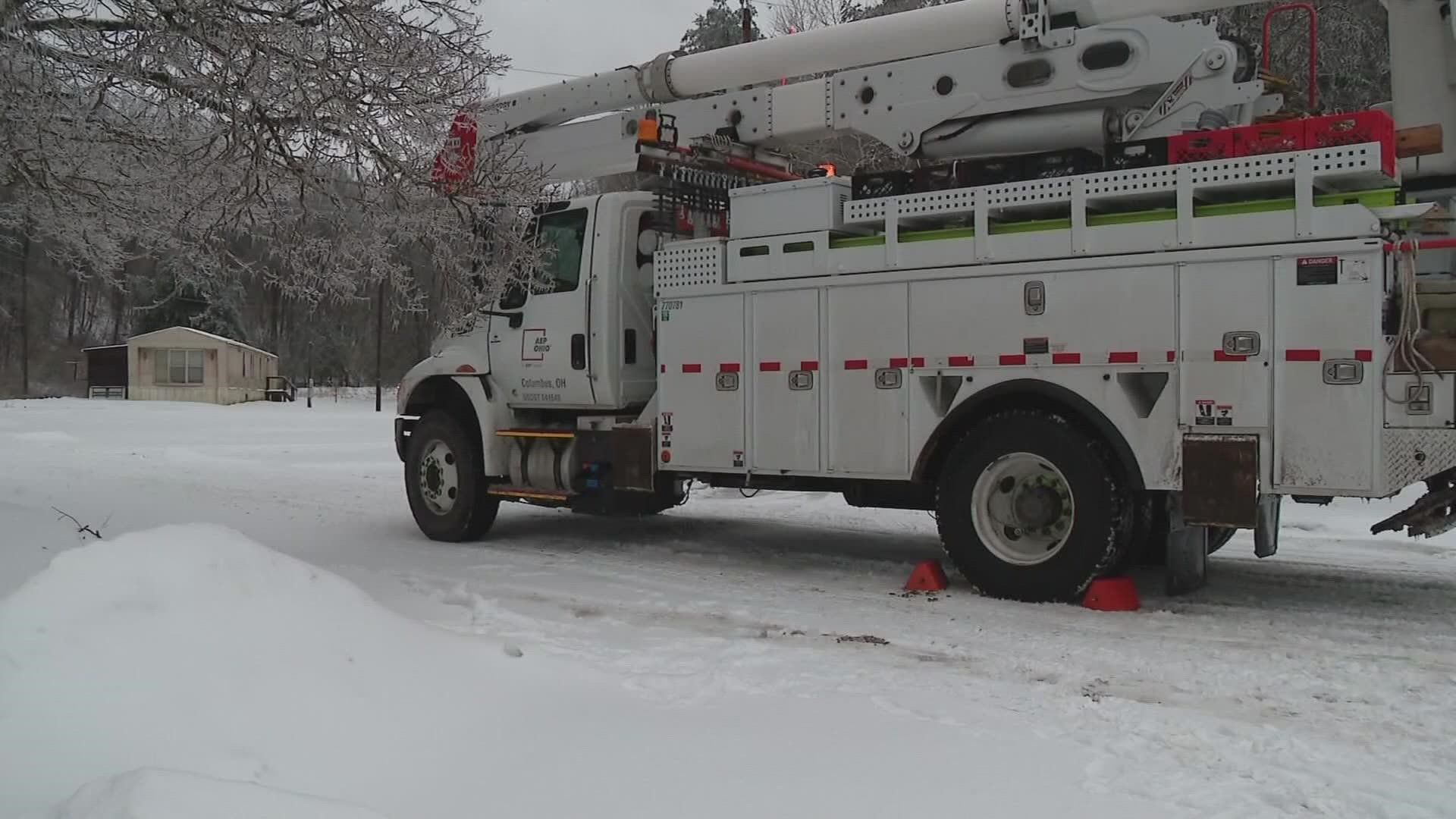FRANKLIN COUNTY, Ohio — Winter is right around the corner and those who lost power during this summer's large storm, coupled with a heatwave, are wondering if another massive outage could happen again when the temperatures dip below freezing.
Five months after the American Electric Power outage in June that left 170,000 customers in Franklin County without power, the Public Utilities Commission of Ohio has yet to release a report about the outages as promised.
“PUCO staff’s investigation regarding the central Ohio power outages remains ongoing. There is not a final timeline on when the report will be published, but when it is, it will be made publicly available,” said Brittany Waugaman Public Utilities Commission of Ohio Office of Public Affairs.
The Ohio Consumer Council has filed motions to compel PUCO to provide documents about the summer power outage.
“I remember the electric going off. No warning, no nothing,” said Jim Decker of Columbus.
Decker says he lost power for three days.
“$2,500 worth of food gone,” he said.
Professor Abdollah Shafieezadeh of the Ohio State School of Engineering says the electrical grid is old. He said, “these were designed with the intended design life to last 50 years so we are way past that."
The U.S. Department of Energy found that 70% of U.S. transmission lines are more than 25 years old in its last network-infrastructure review in 2015. Lines typically have a 50 year lifespan. The average age of large power transformers, which handle 90% of U.S. electricity flow, is more than 40 years.
“Over the past six years power outages more than doubled from the previous six years so we know these events are happening more and we know that climate change is getting worse,” says Rebecca Mellino of Climate and Energy Policy Associate for Nature Conservancy.
The grid is having to deal with something it wasn’t originally designed to withstand—frequent extreme weather events.
AEP'S president and CEO, Mark Reitter, said this summer’s outage revealed a problem with the way the company communicates with its customers.
“We let our customers down In June with respect to communications,” he says.
He told 10TV just 14% of customers in June signed up for text alerts so they could be warned about a power outage.
So what can be done in the future to prevent another outage?
“It's hard to plan for extreme weather”, Reitter said.
He’s talking about ice on power lines. Half an inch of ice can add 500 pounds of weight to a power line. Three-quarters of an inch of ice can cause a power line to sag six feet, while an inch of ice causes a power line to sag nine feet.
Older power lines are designed to handle half an inch of ice and 40 mile per hour winds. Some newer lines, however, can handle over an inch of ice and 90mph winds.
AEP tells 10TV it’s working to make the grid more resilient.
The company says it’s accelerated it’s tree cutting program to prevent trees from falling on lines.
After the June storm, AEP tells 10TV it used laser imaging across the entire grid to determine the health of the electric lines.
AEP says it also plans to spend between $800 and $900 million over the next five years to make the grid more resilient.
10TV also learned that AEP is negotiating with PUCO to extend the amount of outages it’s allowed each year to two hours and 38 minutes, an additional 22 minutes.
AEP says the request is based on a growing population.
“The system is bigger so more is required to maintain that,” Reitter said.
Meanwhile, people like Jim Decker hopes the power lines near his west Columbus home will hold up when the temperature starts to fall.
“I figured the power went out in the summer it can just as well go out in the winter,” he said.
To sign up for AEP text message alert, click here.

